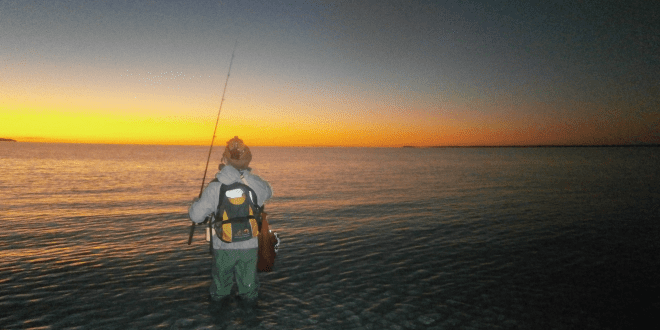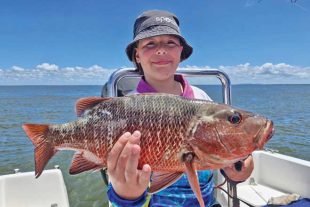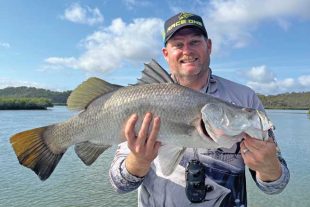Going on a fishing trip with brothers and mates is always very special. But when you add to that the brilliant beach and flats fishing of Fraser as well as the wonderful and diverse scenery from rainforest to rocky headlands, huge kauri pines and window lakes, it is hard to beat.
We’ve tried a couple of other locations along the way for our lengthy trips, but Fraser truly is our one and only island home come August each year. We care for the island and treat it and its history with the respect it deserves.
Tailor time
July to October is renowned as tailor time on Fraser, and this year was no different. While the tailor action wasn’t hot by any means, nor the quality great, we actually enjoyed the challenge of finding fish and working hard for them.
On a 10-day trip with the gutters changing from high to low tide and the fish a bit light on we had to search around, but we found tailor each time we targeted them by choosing the right gutters and conditions. Generally we found nice gutters from the Oaks south of Yidney Rocks to just south of Dundaburra, including around the famous Maheno shipwreck. But because gutters and conditions change on a weekly and sometimes daily basis, there were a few key take-home messages from searching for our fish.
First was the consistent success we had on Duel Adagio casting lures. These things are like magnets to tailor, and if the fish were in the gutter these lures would normally find them first.
Second, when we found fish I would quickly berley with old pilchards to keep them in the gutter longer.
And third, when we chose a suitable gutter with a large dune at the back the tailor action would start up to 20 minutes earlier due to the shadow effect on the water. But while the tailor fishing action from Fraser is well known, the focus of this article is our continued success on the western side of the island and how and what we did to achieve it.
West side action
It continues to amaze me year in and year out how few anglers venture over to the western side of Fraser to experience its great fishing during tailor season. I don’t think people realise it is much more than just a summertime destination for sight fishing the flats for huge golden trevally.
It could also be the run across the inland tracks that puts people off due to the (perceived) time it will take or concerns about their brand-new LandCruiser or Prado ending up with ‘bush stripes’ from the overgrowth. Whatever the case, anglers are missing out on brilliant mixed species.
A whole range of options exist for the western side too, from Wathumba Creek in the north to the western side of Inskip Point in the south. As an added bonus, some of the locations also have mangroves for great mud crab action.
We took advantage of this by trying out the new rugged triangular pot from Coucom’s Crabpots and Fishing Gear at Yeppoon. This pot is very sturdy and its innovative design allows you to get it into thin drains or tight spots in thick mangrove-lined side creeks.
On a couple of occasions, leaving the pots in while we fished for the day meant we had the bonus of mud crab for entrée, with fresh whiting, flathead and cod for tea. Our Ontour Fishing Australia group normally splinters off on the western flats to those chasing flatties on plastics and those chasing whiting on bait.
The great thing about the Fraser flats is you normally end up with a mixed catch with both techniques anyway, though the target species normally makes up the majority of the catch.
Lure fishing fun
During our latest trip we had four sojourns to the western flats, each with success in one way or another. I don’t know whether it’s a sign of the flathead season to come this spring but the flathead fishing on lures this year was nothing short of sensational.
The quality of the fish was also fantastic, with a 75cm and a 78cm fish released, as well as lots more over 55cm. As an added bonus, a lovely 3.2kg (61cm) estuary cod (measured on our fantastic new JRoc Tackle 3-in-1 digital lip grips) was caught by my brother Rossco in about 60cm of water near the edge of the drop-off on the flats.
On one of the days a couple of our group caught 13 to 15 legal size flathead each (releasing the majority) on plastics. On top of that were a few undersize flatties and other ‘by-catch’ as we call them such as legal bream and whiting (to 34cm) in each session. For the other three days, between seven and 13 legal flatties were landed by each angler during every session, as well as by-catch.
That might not sound sensational from a boat covering hundreds of metres or kilometres in a day, but this was from the shore in areas no more than 150m wide and in a concentrated four-hour period of two hours before and two hours after low tide. It amused us greatly during the trip when we read an article in one of the glossy fishing mags stating flathead don’t fight.
This might be the case if you use whipper snipper cord on a 3500 reel to skull drag them into the boat, but we were fishing with 4lb braid, 10-12lb fluorocarbon trace, 7’ high-modulus Lox graphite rods and 1000-2000 size reels while walking the flats.
I can assure you that in 1-1.5m water these fish fought doggedly, especially because we didn’t carry a collapsible landing net and so had to beach them each time, occasionally as far back as 25-30m from where we were wading in the very shallow water.
In terms of lures, sometimes you get a couple that come close in terms of success, but on this trip one lure stood out like no other. We tried a few others and they got fish, but not at the same rate as the 2.5” Z-Man Slim SwimZ in Motor Oil, which is a paddle-tail soft plastic. We attributed its success to the natural colour in the relatively clear water but also its action. Its tail is designed so that when the lure hits the bottom it will not sit flat, rather the tail wiggles enticingly in the current due to its buoyant tail-up resting action. The fact it is a Z-Man plastic also means it is incredibly strong and flexible and will survive lots of fish strikes.
Adding to the attraction of the lure was the light jig head we used. We never went heavier that a 1/6oz TT HeadlockZ Finesse jig head. The Finesse jig heads use fine-wire Japanese hooks and are specially designed to penetrate on light lines and with light drag settings – and they did.
Interestingly, as good as the flathead fishing on soft plastics was, the variety (with the exception of the cod) was down a little this year, perhaps due to the conditions. Last year we also got a golden trevally or two and a number of grunter on the plastics. According to my fishing diary, in the previous couple of years the water was much more discoloured due to several days of strong southeasterlies stirring it up.
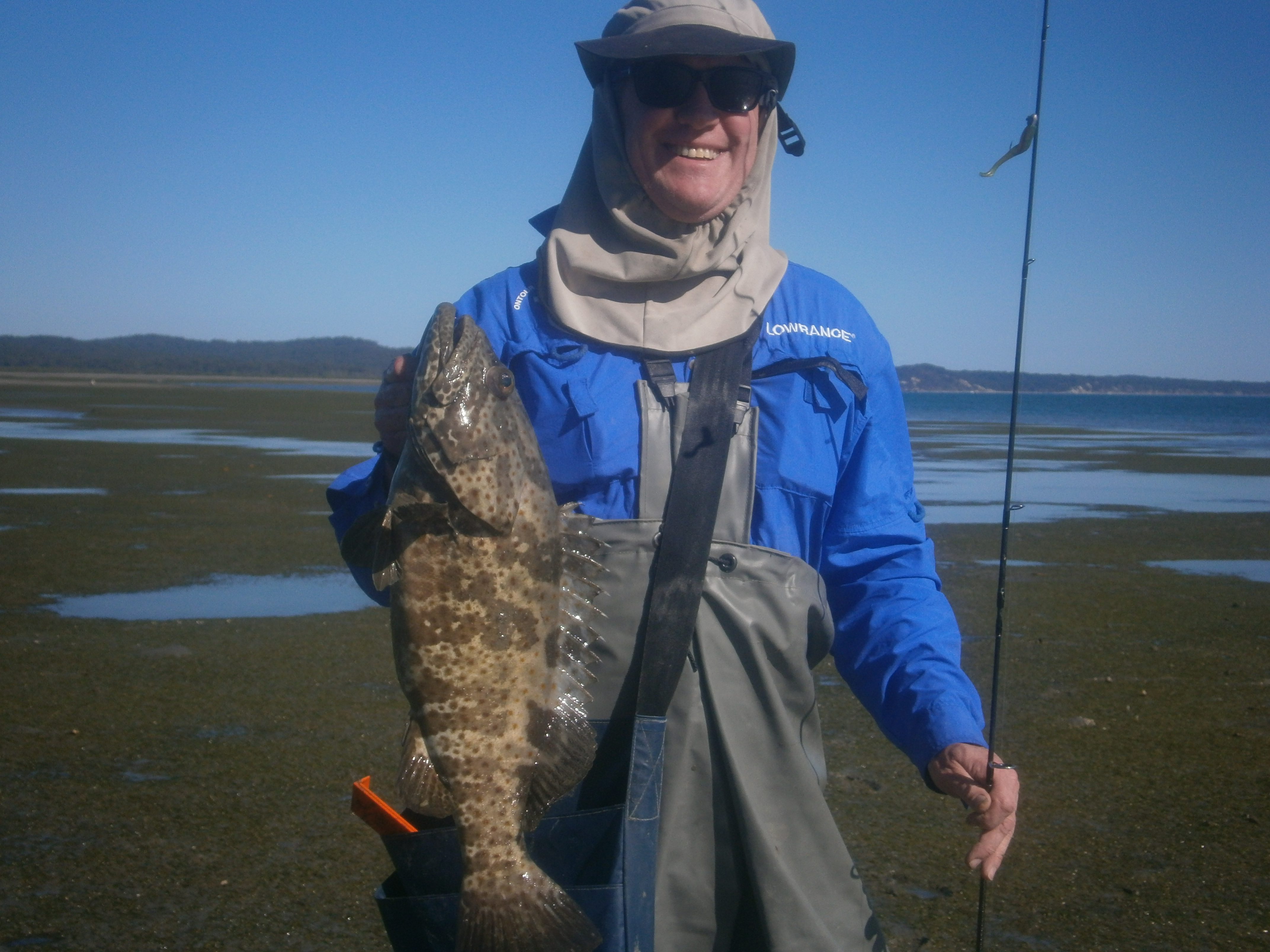
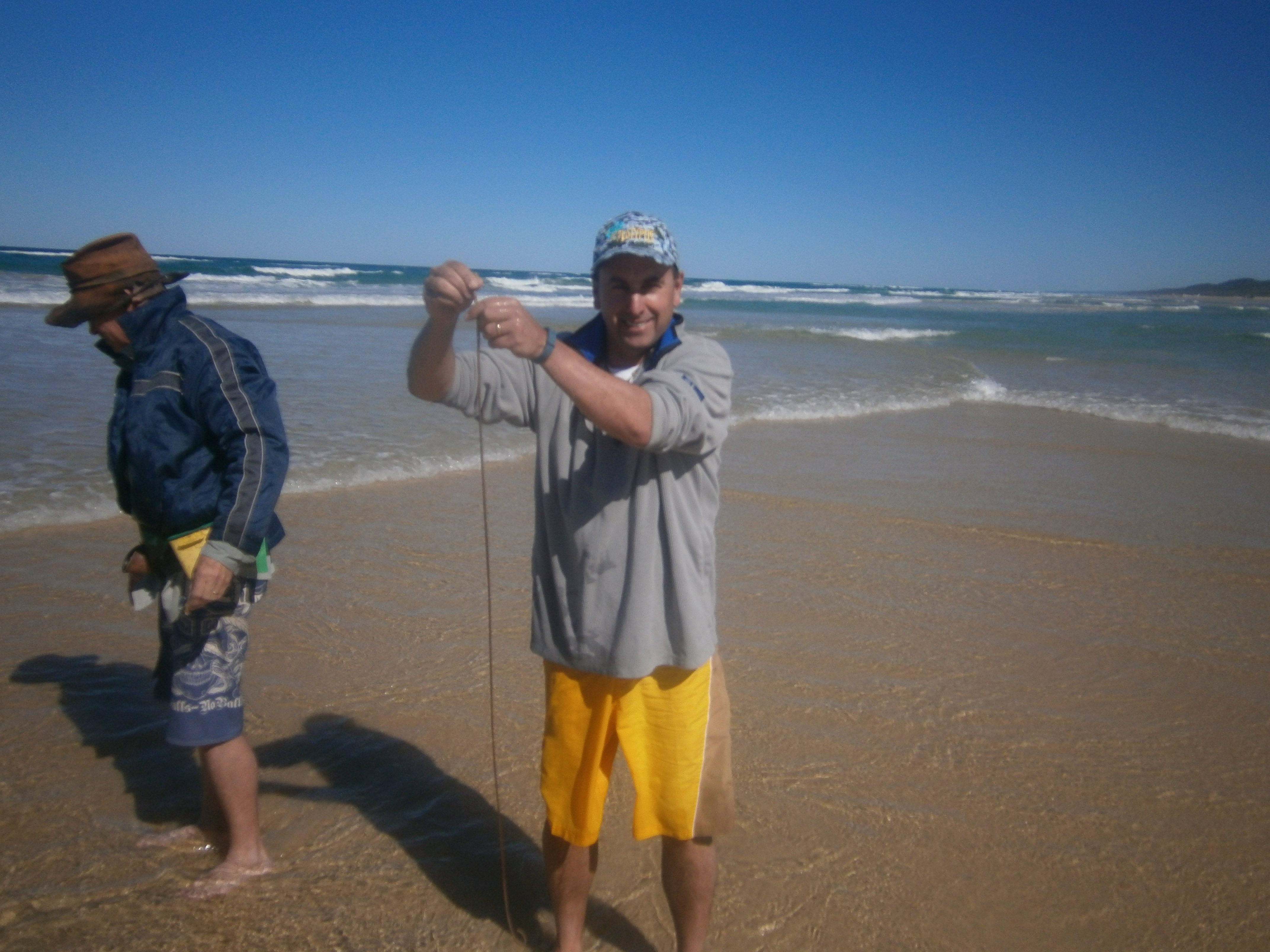
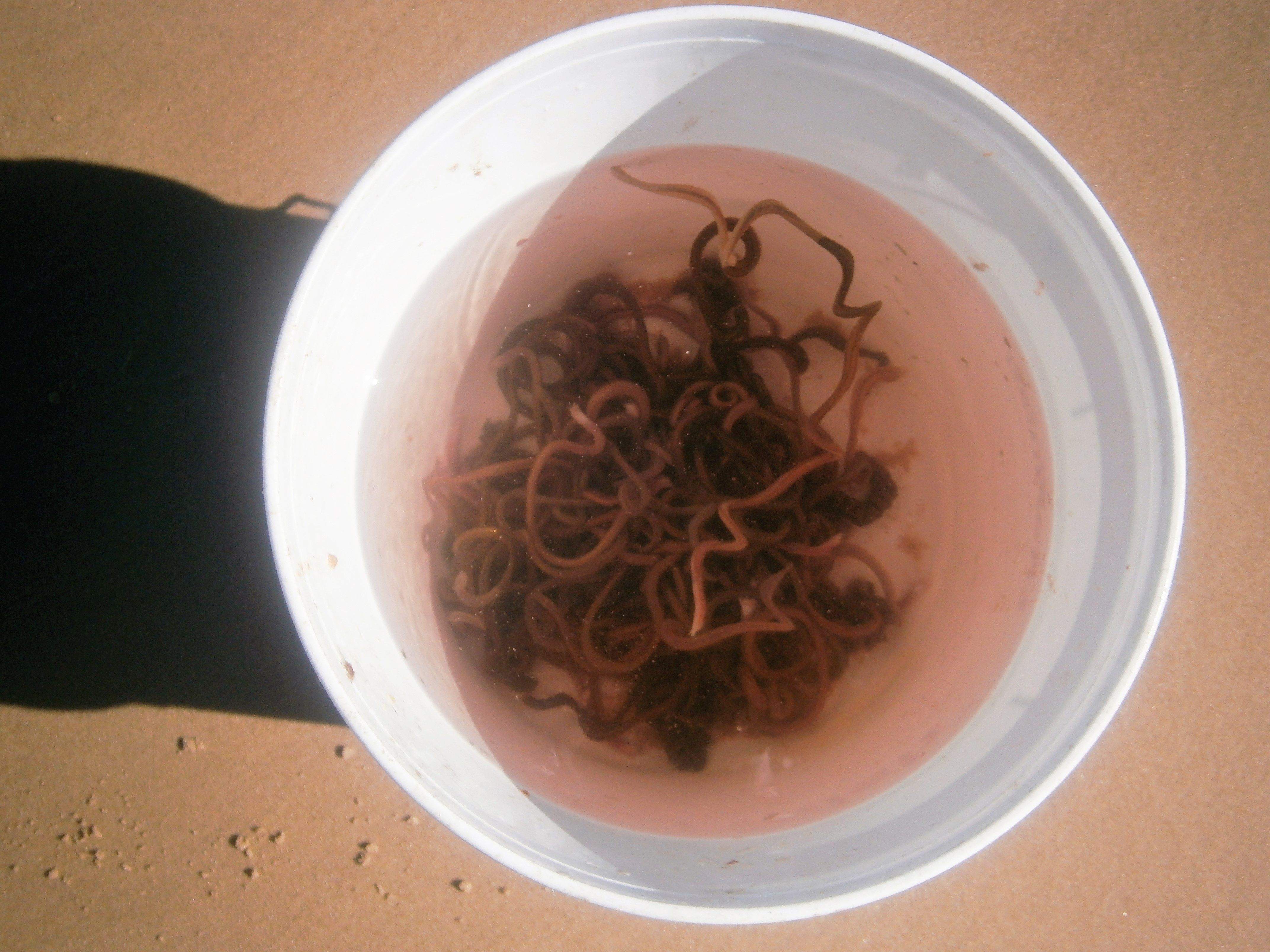
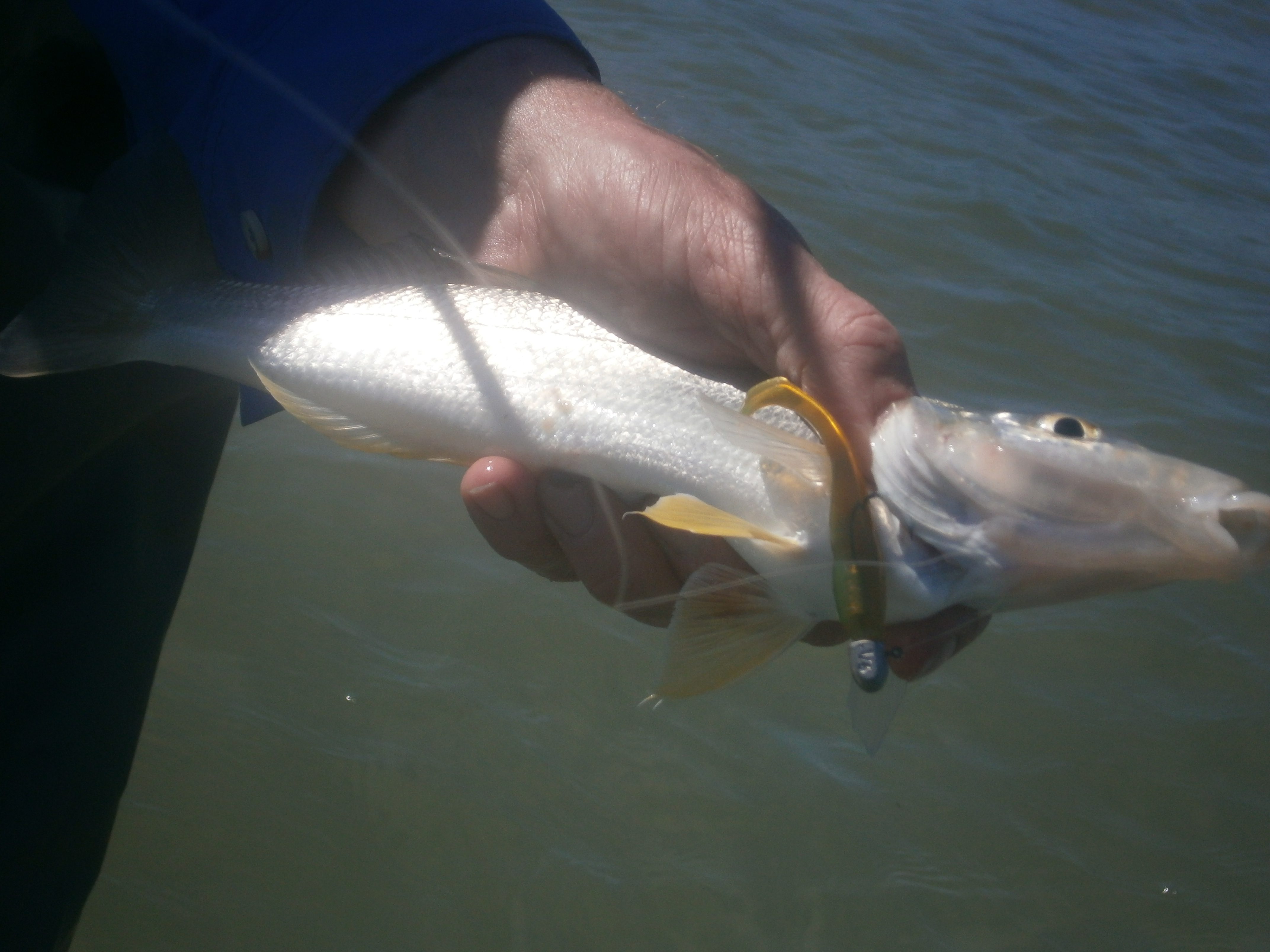
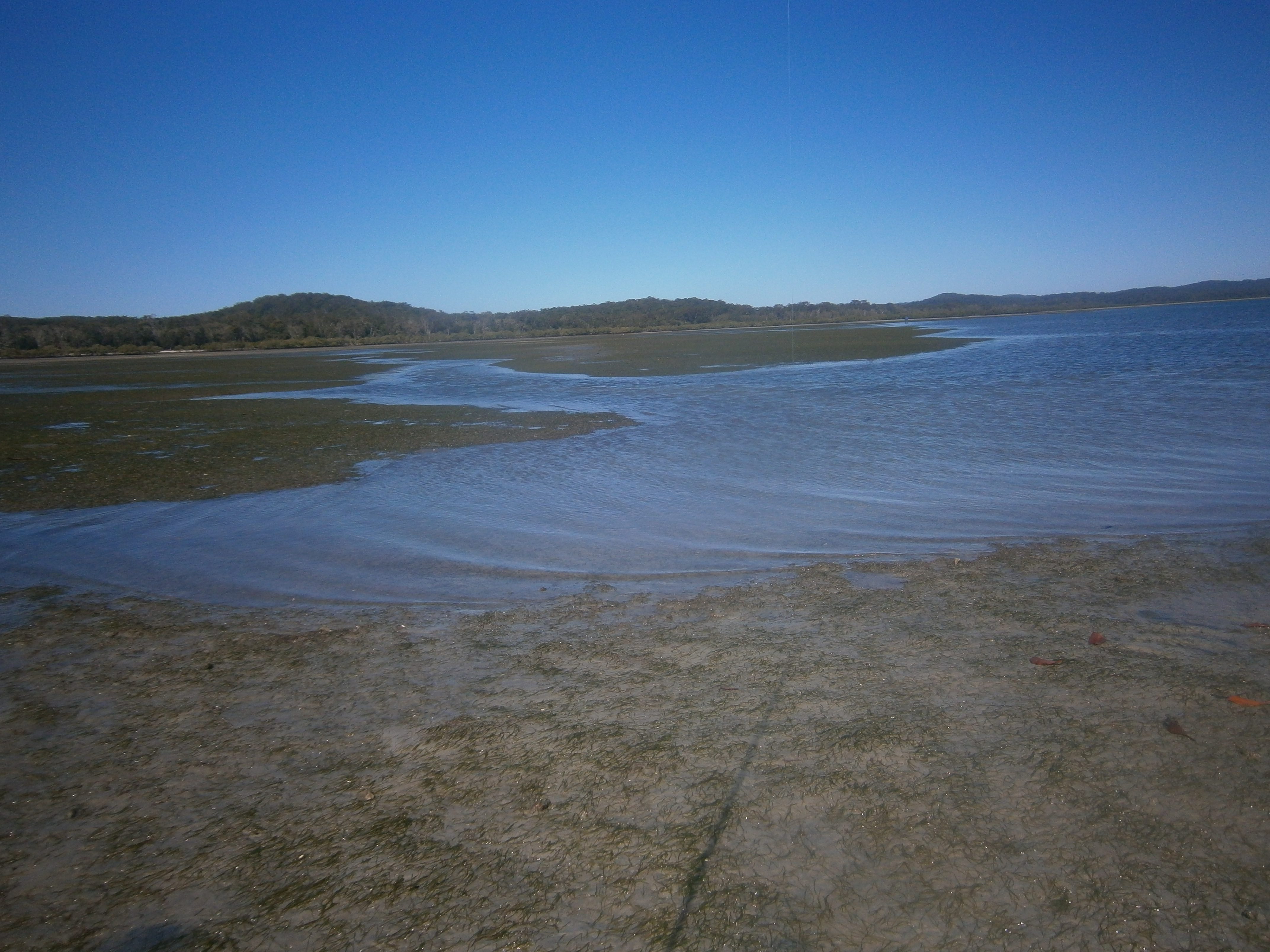
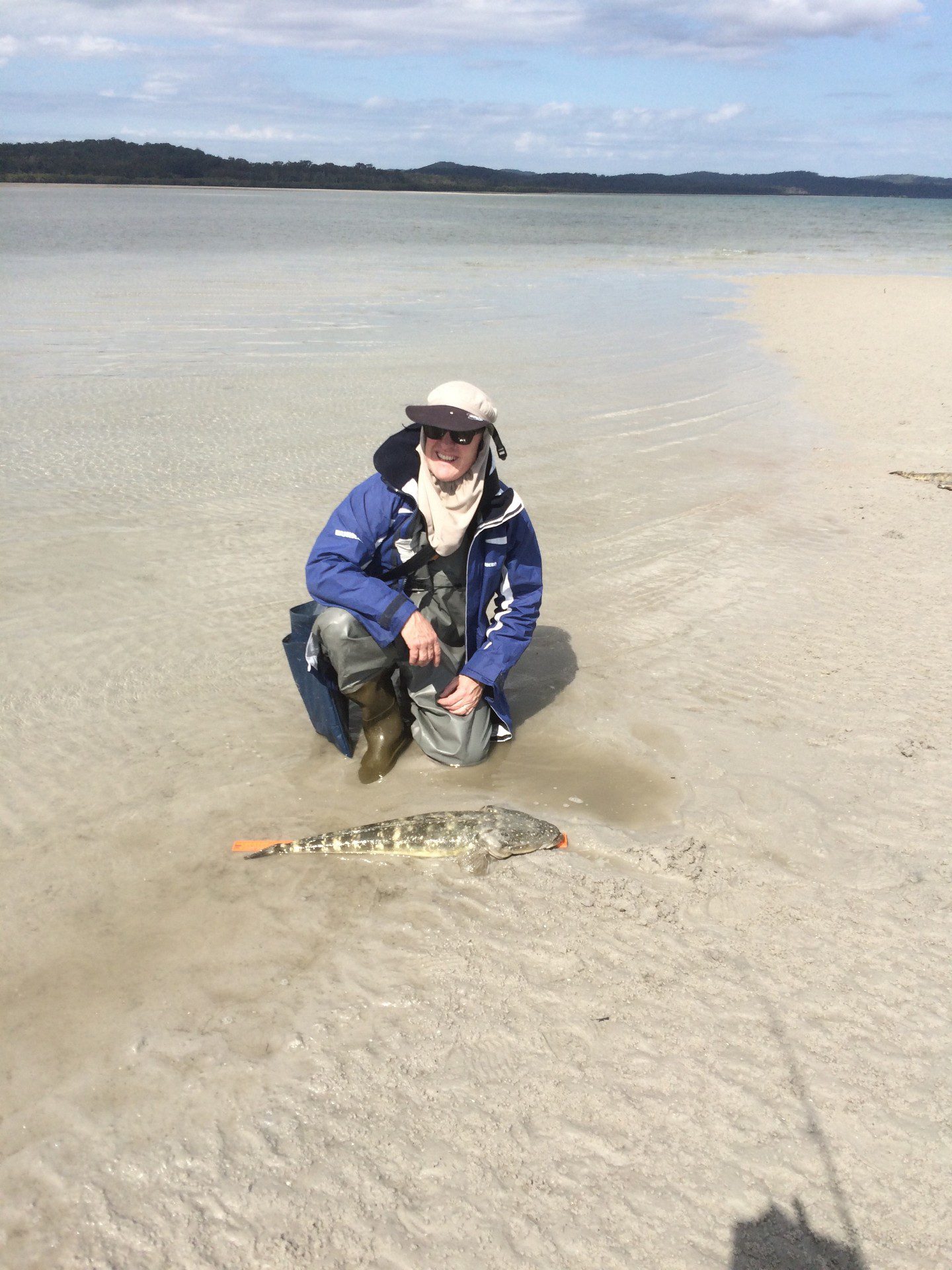
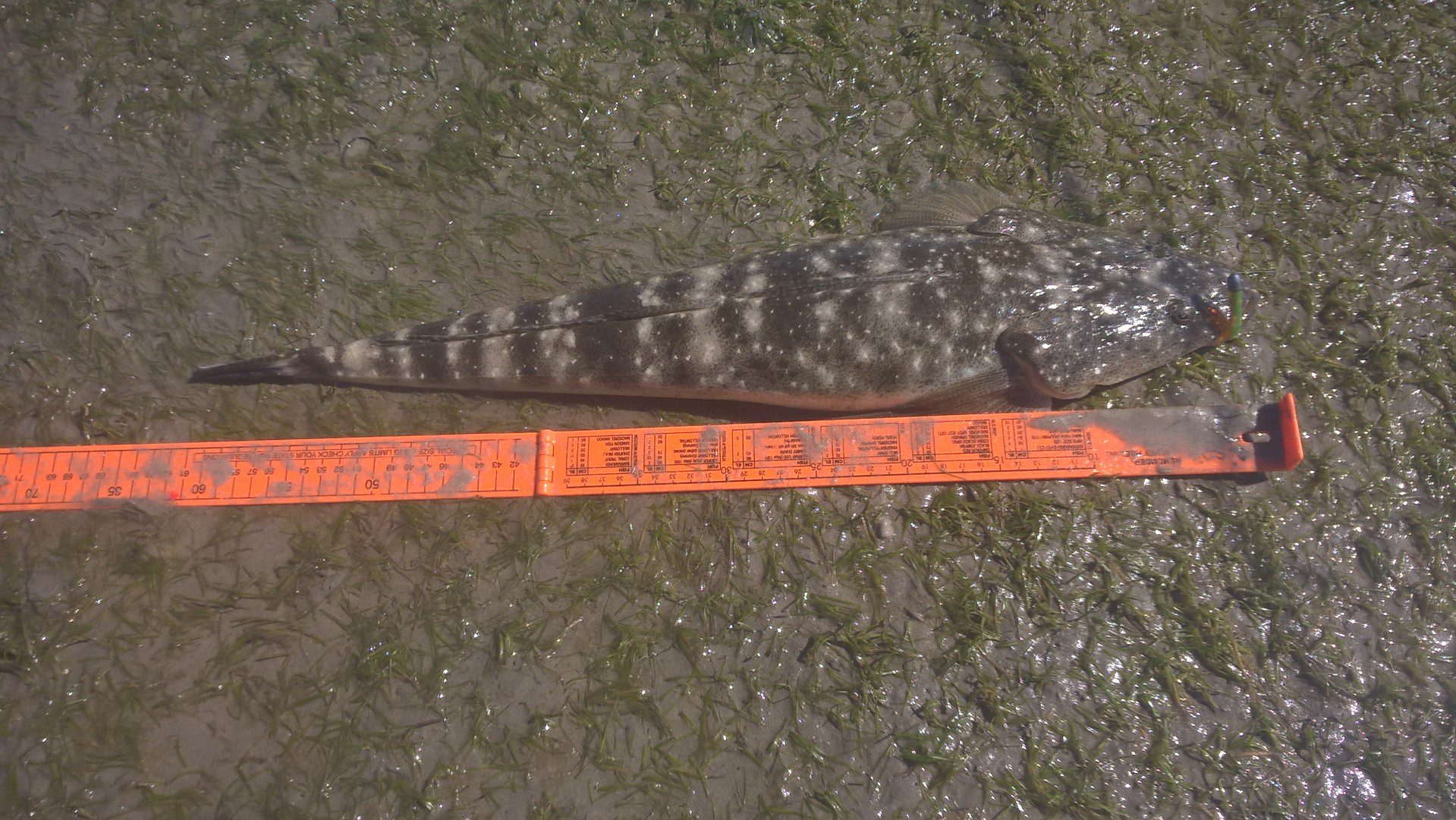
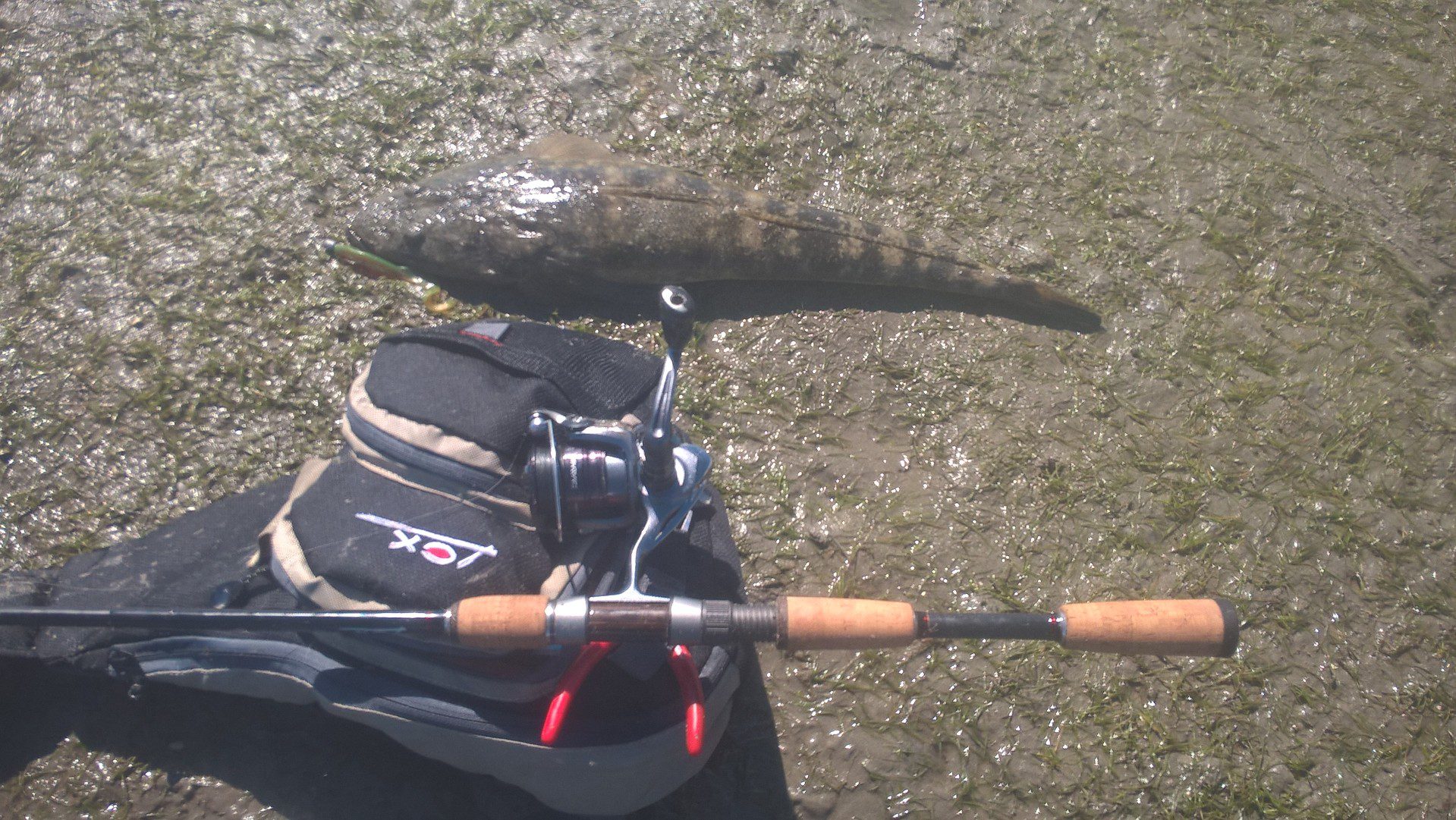

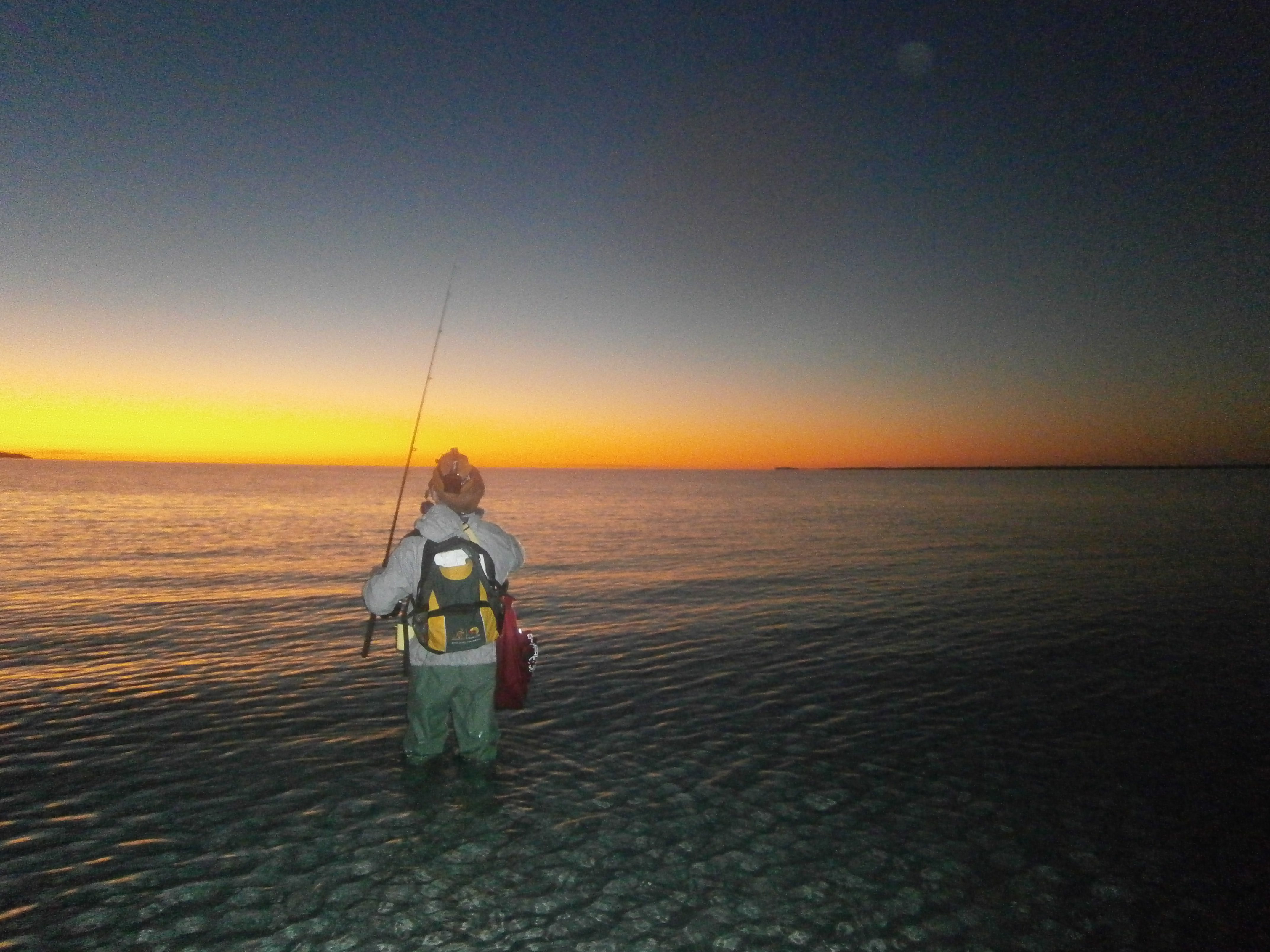
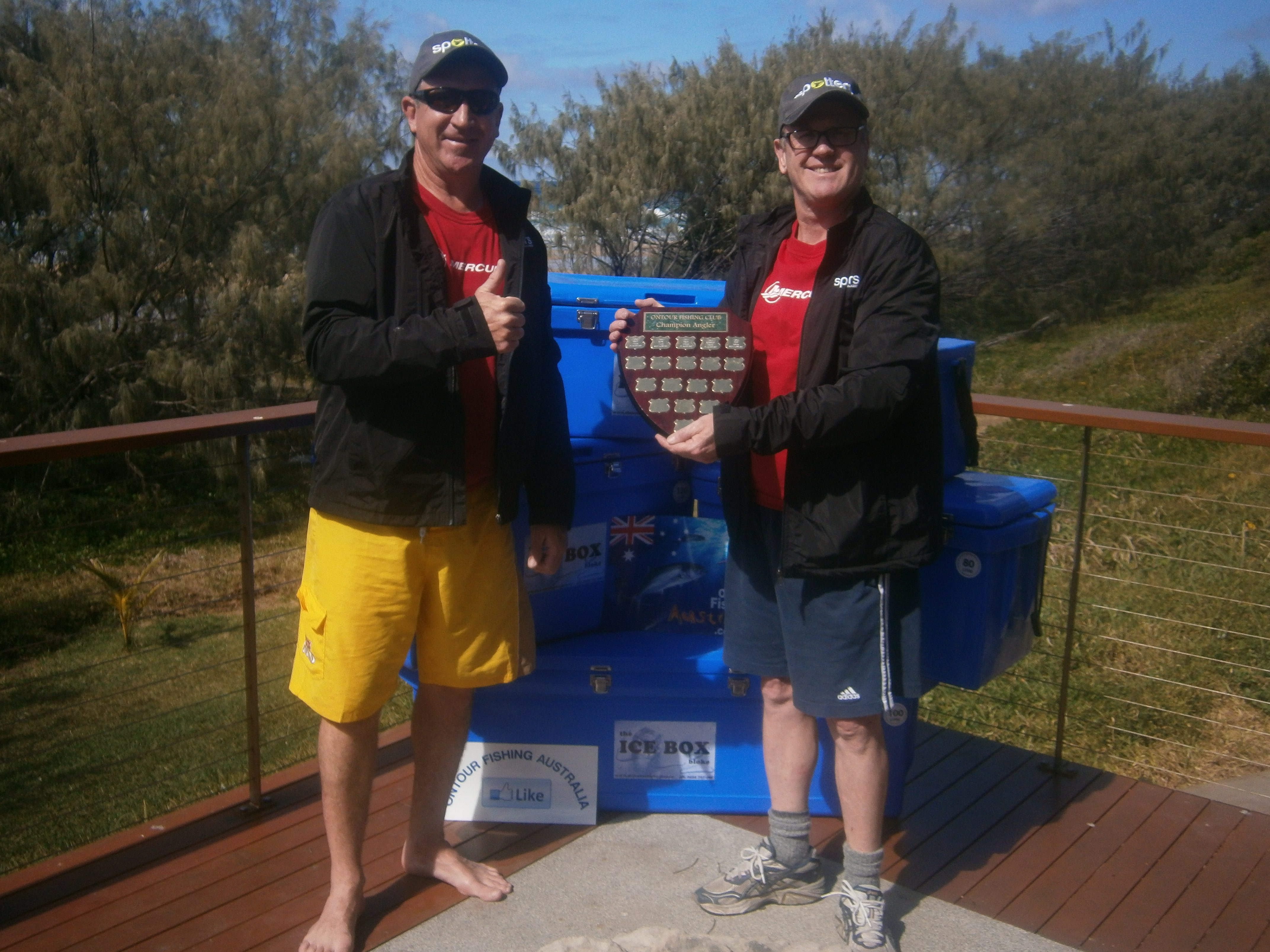
Brilliant bait fishing
From about the beginning of August to the end of October each year the summer whiting fishing on the western flats of Fraser can be hot. In fact I read that in the 1970s the Queensland Light Gear Championships for whiting were held at Moon Point in an all-night affair, with catches of 200 fish before the introduction of bag limits.
Summer whiting can at times be hit and miss on the ocean beaches in late winter and spring, though we unlocked a few secrets to better success this year. But even with that new knowledge, for whiting the ocean beach is nowhere near as productive as the western side. As usual, this year did not disappoint, with the days leading up to the new moon the most productive.
We caught a number of 30-32cm fish this year, but unfortunately no crackers like the 39cm fish captured in previous years. On top of that, we also landed the odd flathead, bream and longtom on bait. Once again though, fish such as grunter, flounder, dart (which pleased us to no end!) and even surprises hooked in recent years such as a legal squire and spotty mackerel, were all absent. We put this down to the absence of consistently strong southeasterlies.
In terms of bait, we always planned ahead and caught plenty of beach worms the day before. If you can’t manage to catch a worm, Larry and Deb at the Fraser Island Retreat shop at Happy Valley sell four long worms for $5, which is a fairly good price.
On top of the worms, we also like to pump yabbies for a bit of variety.
Some days the choice of bait doesn’t matter, some days the bigger fish prefer worms and some days yabbies can be slightly in front, so it’s best to have a combination. Pipis however are an unnatural food source on the western side and thus a poor bait choice.
The gear of choice is 10’-11’ long light 2-4kg surf rods and 5” tough as nails Alvey reels. When you are wading a long way from shore and catch a fish or need to re-rig, it’s painful to watch the new boys with spinning reels try to juggle rod, fish and sometimes knife or pliers under their arms and in their hands to keep the reel out of the water. They come back with Alveys for their bait fishing the following year.
We use 6lb Australian-made Platypus Super-100 monofilament main line due to its very thin diameter (0.19mm). In terms of fluorocarbon trace, we run 60-80cm of 6lb Platypus Stealth Leader below another short trace of about 20cm where we run a 1-2 ball or bean sinker between two swivels to avoid line twist with the Alvey. I prefer a longer trace drop of 80cm, though being slightly taller than average makes it a bit easier for me to cast.
It is also advisable to run a small soft bead between the sinker and bottom swivel to avoid the sinker banging hard against the knot when casting. Just above the hook we run small pieces of red tubing or beads or a combination of both.
In terms of hooks, my preference is for very fine size 6 Tru Turn hooks, however the fish will often swallow these, making de-hooking a longer process. Interestingly, when we were fishing ‘short’, that is, throwing short casts in to the edge of the mangroves at high tide, the fine hooks made a big difference.
We found the fish were dropping the heavier-gauge Tru Turns too quickly when we had a short length of line between the bait and the rod and thus less ‘give’. A quick change to the lighter gauge resulted in much better hook-ups. Our action on the whiting is almost always the simple cast and slow retrieve method. Let the fish take some line (even reverse wind the Alvey – another of its great advantages) and when they pull the tip right down, wind and strike.
Target areas
One mistake anglers can make when fishing the western side is turning up and fishing whatever lies in front of them, which is usually the closest spot to where they parked the four-wheel-drive.
Our target areas on the flats depended on our desired species and technique. For the flathead fishing on plastics, our key target areas were the mouths of drains, the edges of the weed beds and the drop-offs to deeper water ledges.
The flatties sit in these areas and target baitfish as they run off the flats or make their way into the drains and shallows as the tide first rises. As mentioned, the best time was two hours before and after low tide. When bait fishing, we caught fish on the rising and falling tides, but when the run slowed around the change of tide the fishing dropped right off.
This year the flats whiting were less concentrated around the bigger sand spit areas and were in greater numbers where the drains and small channels entered and exited the flats. They followed these drains in and out with the tide. At high tide the fish were in around the edge of the mangroves where we had pumped yabbies.
As is often the case, if we wanted bream we would just wade out and cast to the slightly deeper holes near the drop-offs on the flats. But bream is not our target species, so when we get a couple of them we usually move.
Overall it was another great Fraser trip and plans are already in motion for the next one in 2016. But better still, I’ll be back at Fraser with the family just as this magazine hits the stands.
So until next time, bag your mates – not your limit and check out my Ontour Fishing Australia Facebook page for tips, reports and giveaways.
 Bush ‘n Beach Fishing Magazine Location reports & tips for fishing, boating, camping, kayaking, 4WDing in Queensland and Northern NSW
Bush ‘n Beach Fishing Magazine Location reports & tips for fishing, boating, camping, kayaking, 4WDing in Queensland and Northern NSW

